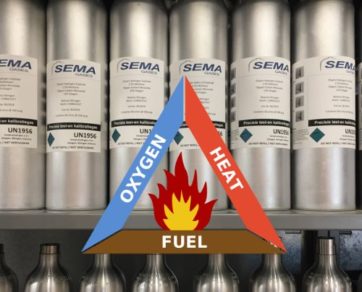The prime ingredients of beer are water, barley (malt) and hops. Put the malt in hot water to make the wort and ferment it in the tank. At that time alcohol and carbon dioxide (CO2) are generated. At that point, gas detection comes in to protect everyone in the brewery.
What is the risk of oxygen deficiency and CO2 poisoning?
While standard atmosphere contains between 20.8 and 21% oxygen, an oxygen deficiency is an atmosphere that contains less than 19.5% oxygen. Various symptoms begin to experience in the human body when it is in an oxygen deficiency, and in the worst case, it may lead to death. The threshold limit value (TLV) of a chemical substance is believed to be a level to which a worker can be exposed day after day for a working lifetime without adverse health effects. TLV is a reserved term of the American Conference of Governmental Industrial Hygienists (ACGIH) and is the most widely accepted occupational exposure limit both in the United States and most other countries. The Threshold Limit Value of CO2 is 5000 ppm. Various symptoms will be experienced in the human body when the CO2 concentration is 5000 ppm or more, and in the worst case, it may lead to death. To prevent oxygen deficiency and CO2 poisoning, it is advisable to use gas detectors that detect O2 and CO2 in the brewery.
Why use CO2 gas detection in the beer brewery?
Exposure of personnel to CO2 is a problem when producing soft drinks, producing beer and in the catering industry. Even a low concentration of CO2 such as 0.5% (= 5000 ppm) may be sufficient to become unwell. A CO2 concentration of 5% is deadly within 5 minutes. CO2 is entirely odour, colour, and tasteless and cannot be observed by nose and mouth.
In general, the symptoms when exposed to CO2 are as follows:
- 0.5%: No symptoms in 6-hour exposure
- 1-2%: Discomfort feeling
- 3-4%: Respiration, pulse and blood pressure increases. Headache. Dizziness.
- 6%: Dyspnea
- 7-10%: Unconsciousness in a few minutes. Death
In the beer production process and in the wine production process CO2 is a by-product that arises during the fermentation process. CO2 is heavier than air. CO2 that is released drops to the ground and accumulates into an invisible deadly blanket. Accumulations of CO2 occur in basements, storage bins and enclosed spaces such as tanks and silos.
In general, there are two solutions for CO2 gas detection to create a safe work environment:
1. The installation of fixed CO2 detection. This is a fixed system consisting of a gas measuring head with a CO2 sensor in the room where CO2 could be present connected to a control panel that is suspended in another room which is guaranteed safe and CO2 free.
2. The use of a portable CO2 gas detector. This portable detector a person carries with him when he is entering the room where CO2 could be present.
Why use O2 detection in the beer brewery?
Another danger to monitor is the decrease of the oxygen concentration. Similar as with CO2 gas detection there are in general two solutions for O2 detection: fixed or portable.
What is the most recent law?
Regulation has been included in the ‘Arbowet’ since 2001. Recently, the government recognised the importance of gas detection within the brewery. Since 2017 there have been stricter rules for the storage of and working with carbon dioxide. The new law applies to accessible spaces in which 1.0 kilograms or more of carbon dioxide is stored. To check wbso subsidise options. So these are almost all beer cellars and cold stores. It does not matter whether carbon dioxide is used in the cellar, cold store or room or not. As soon as there is a storage of more than 1 kg of carbon dioxide or if the carbon dioxide pipes only pass through the cellar, cold room or storage room, CO2 gas detection is mandatory.



